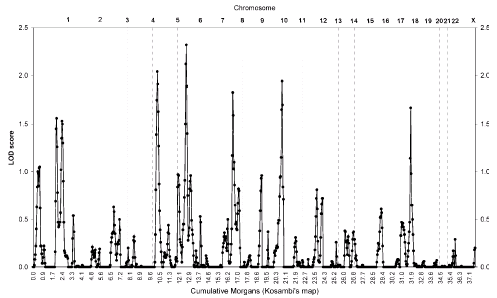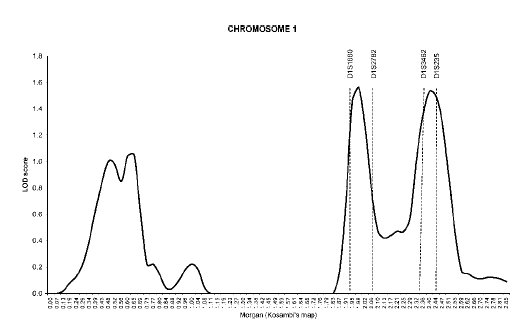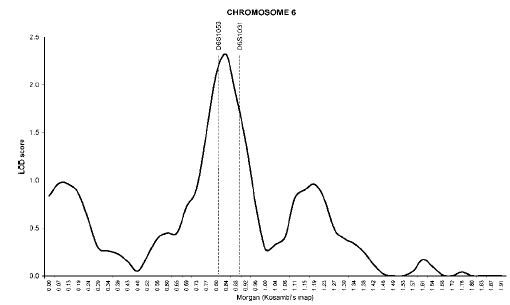Tuesday, September 21, 2004
Genes for height
 The higher a peak on this chart the more likely it is that the marker in question is linked to a gene that is playing a role in determining height. The numbers on the top represent the chromosome on which each marker is found. The graphs below show finer detailed maps for individual chromosomes:
The higher a peak on this chart the more likely it is that the marker in question is linked to a gene that is playing a role in determining height. The numbers on the top represent the chromosome on which each marker is found. The graphs below show finer detailed maps for individual chromosomes:

 Again the higher peaks represnet an area that is more likely to contain a gene influencing the owner's height.
Again the higher peaks represnet an area that is more likely to contain a gene influencing the owner's height.
The strongest linkage for any marker was found on chromosome 6, a number of similar studies have found similar results strongly suggesting there is something in this region influencing height. Further support to that claim comes from the fact that area of the genome contains the oestrogen receptor alpha gene, which has been suggested to effect height. An area on chromosome 18 with a high LOD score also correlates to other studies, all told the Dutch team found a total of seven areas in the genome that might effect height. If these QTLs are supported by other studies then scientists can start looking at sequence of these areas provided by the Human Genome Project and start determining which individual genes are playing major roles in influencing one of the more complex of human traits.
(Willemsen et al (2004), QTLs for height: results of a full genome scan in Dutch sibling pairs, European Journal of Human Genetics, 820-8)










